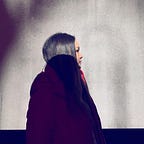The Lesser-Known Female Artists
They are all up there.
From Vincent Van Gogh to Pablo Picasso to Rembrandt, they are all up there in the list of iconic painters throughout history. When we think about famous artists, these names are among the first few that come to mind. However, if I asked you to think of a female artist, who do you think of? Georgie O’Keeffe? Frida Kahlo? While they are undoubtedly trailblazers in the art world, there is a multitude of under-discovered female artists that seemingly pale in comparison to their male counterparts.
Sexism and inequality issues in the art world are prevalent not only in the historical aspect, but it still continues to be a relevant problem. According to the Guardian, female artists make up only 4% of the National Gallery of Scotland’s collection; 20% of the Whitworth Manchester’s and 35% of Tate Modern’s collections. There is no single female artist on Artprice.com ‘s list of top-priced 300 works on auction between 2008 and 2012.
There still lies the stigma of women being less dedicated to their careers than men, and that they focus on their family life later on. Perhaps the long imprinted mindset of women’s lesser talents stained the industry so much that the public eye never even saw the majority of the work produced by women. Either way, this is a battle we still fight in the modern-day. Here are a few of the countless under-discovered female artists throughout history that are noteworthy.
Artemisia Gentileschi (1593–1653)
An Italian Baroque painter that worked in the style of Caravaggio, Gentileschi is now considered one of the most accomplished and skilled 17th Century artists. Her artwork revolved around depictions of myths, allegories, and Biblical events. At the time, her reputation was called into question when her teacher, painter Agostino Tassi, was convicted of raping her. Despite her difficulties in her career due to that scandal, she was the first woman to be admitted to the Florentine Academy of Fine Arts.
Her artwork tended to focus on female subjects, such as Judith and Holofernes shown above. The skill was excellent in its ability to handle color and illustrating dimensions, and the utilization of contrast portrays a grueling yet naturalistic illustration of the figures.
Harriet Powers (1839–1910)
Harriet Powers was born into slavery in rural Georgia, spending her early life on a plantation where she learned the skills of quilting. Her quilts are tales made from traditional appliqué techniques of local legends, Biblical stories, and celestial phenomena. Pictorial Quilt, shown above, is one of the only two quilts that are known to have survived. She is someone to know not only because of her inspiration and process of her artwork, but she is also a female artist that works with non-traditional materials in the sense it differs from paintings. Her work serves as excellent examples of Southern American quilting, with roots in African American history.
Shown above, Pictorial Quilt encompasses both Christian and African symbols. The panels depict astronomical events, like Black Friday, the Leonid meteor shower, falling stars, and a series of forest fires.
Suzanne Valadon (1865–1938)
Pierre-Auguste Renoir and Henri de Toulouse-Lautrec are known for their iconic figure paintings. However, it is lesser known that they were inspired by Valadon’s work. Her career was controversial, as she did not receive any formal training to be an artist, and her techniques deviated from the traditional styles and standards. Male critics dismissed her work because of these factors, but the legacies of future male figure painters were built upon her art.
Valadon is a prime example of how an artist’s background plays an instrumental role in how the public perceives their work, especially when it is a woman. Nevertheless, her style conveys a raw quality that depicts a woman’s body from a female perspective. She was also the first woman painter admitted to the Société Nationale des Beaux-Arts.
Edit: A continuation of this series can be found here, where I feature more female artists.
